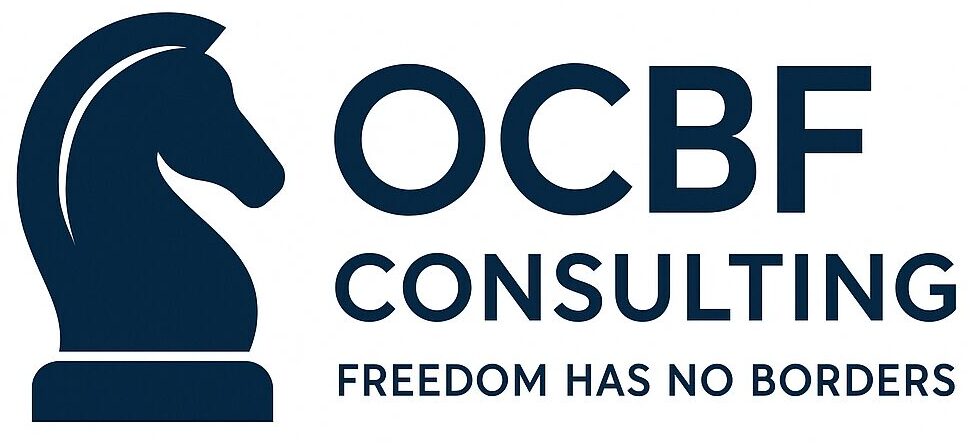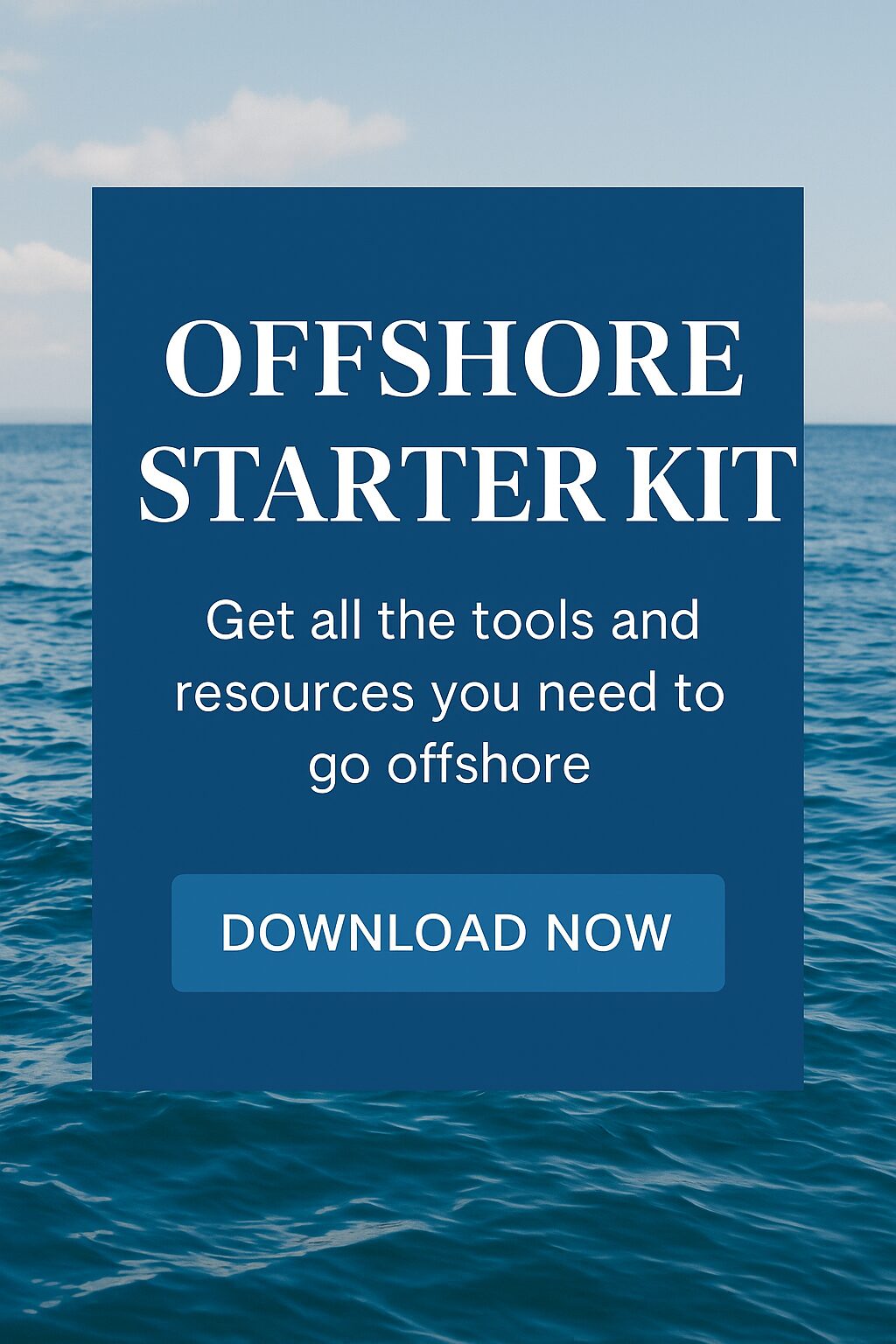When the Rules Changed
When Eileen logged into her offshore fintech account one spring morning, she wasn’t expecting trouble. She had long trusted that her crypto pipeline—mixing an offshore LLC, trust layering, and a multi-currency digital wallet—gave her flexibility without exposure. But that day, she got a notice: “Notification: potential reporting obligation triggered. Please confirm identity and transaction details for your crypto offshore structures.”
That moment crystallized a harsh new reality: the age of untraceable offshore crypto is ending. In 2025, global tax architecture is catching up. The OECD’s consolidation of CRS 2.0 and launch of the Crypto-Asset Reporting Framework (CARF) are turning what once were safe rails into channels of surveillance. What was once invisible is now reportable. For anyone operating at the intersection of crypto and offshore structures, the rules have shifted.

The End of the Grey Era for Crypto Offshore Structures
The tension between technology and regulation has always been at the heart of finance. In the early years of Bitcoin, many saw offshore jurisdictions as a parallel alternative: deploy your code there, park your keys there, and float above the jurisdictional reach of governments. But in the past few years, the compliance world has evolved. The FATF’s travel rules, U.S. crypto tax regimes, EU frameworks like MiCA, and now CARF/CRS 2.0 have gathered momentum. The shift is no longer incremental — it is systemic.
In October 2024, the OECD released the new XML schemas and interpretive guidance that knit together CRS and CARF. The updated CRS text, often dubbed “CRS 2.0,” brings into scope digital money products, central bank digital currencies (CBDCs), and indirect crypto exposure through funds or derivatives. Meanwhile, CARF demands that Reporting Crypto-Asset Service Providers (CASPs) track and disclose crypto transaction flows: trades, transfers, wallet interactions. The two frameworks are designed to sit side by side — CRS for holdings, CARF for transactions.
The first exchanges under CRS 2.0 and CARF are expected to begin in 2027, built on 2026 data. But the lead time is already biting. Jurisdictions are racing to adopt, fintech players are redesigning compliance stacks, and advisory firms are re-evaluating legendary structures.
What “Legal” Looks Like in 2025
Legality in 2025 is no longer about pure distance. An offshore trust or LLC still makes sense, but only if structured to withstand the new visibility. A company that owns digital assets must now grapple with whether those assets are held in a reportable way, and whether their custodians or service providers constitute CASPs. Holding crypto through a private wallet may no longer be enough to evade reporting if the chain of service passes through regulated rails.
The traditional trifecta of offshore strategy — jurisdictional choice, custody separation, and legal layering — still applies. But it must now be enhanced by compliance architecture: identity diligence, reporting pathways, and audit defensibility.
Take, for example, a founder who once parked token revenues in an offshore app that was legally “just a fintech wallet.” Post-CRS 2.0, that app may now be classified under the “depository account” bracket. Under the revised CRS definition, “certain electronic money products” and CBDCs are now treated similarly to bank accounts. Suddenly, your wallet is reportable.
Meanwhile, CARF’s obligations fall on CASPs — exchanges, brokers, wallet providers, and even certain DeFi platforms. These entities will have to collect KYC, map user identities, and transmit transaction data across borders. If your structure depends on interactions with such platforms, those touchpoints become legal pressure points.
Jurisdictions are already moving. The UAE recently formalized its commitment to CARF, joining more than 50 nations in agreeing to share tax info under the new regime — with rollout planned for 2027. And in Europe, DAC8 (the EU’s crypto taxation directive) forces all crypto-asset service providers doing business with EU residents to comply with stringent reporting rules. In the UK, new regulations under CRS 2.0 and CARF come into force in January 2026, mandating registration and enhanced due diligence.
The Grey Areas that Remain
Still, the law’s march is imperfect. Smart contract DAOs, noncustodial wallet protocols, and off-chain derivative vehicles often defy classical categorization. The question of beneficial ownership — who controls a private key, who can move funds, who has voting rights — gains urgency. When a trust holds a wallet, is the settlor or the trustee the beneficial user? Courts may test these assumptions.
Another ambiguity sits in “indirect exposure.” Suppose your offshore company owns shares of a crypto fund, or holds token derivatives. Under CRS 2.0, such exposures may be captured as financial assets, even if no tokens are held directly. The shift tilts the advantage away from obfuscation and toward structural defensibility.
At the edges, some instruments retain ambiguity. Closed-loop tokens or native CBDCs may sometimes fall outside CARF — even as they fall under CRS. The line may be drawn, but the terrain is still contested.
The New Enforcement Frontier for Crypto Offshore Structures
Legal ambiguity is not a safe haven; it’s a battlefield. Structures built solely on gaps exist at risk of reinterpretation or litigation.
In the next few years, the enforcement frontier will expand. Blockchain analytics firms are already matching on-chain movements to reported accounts. Tax authorities will lean on AI, data science, and global transparency to map previously invisible flows. A decentralized wallet once thought untethered may suddenly trace to a reported fintech gateway. The compliance net tightens.
But what we must avoid is paralysis by fear. The path forward is not retreat but adaptation. The structures that survive will be those that are audit-ready, layered, and resilient, not simply hidden.
Building a Compliant Fortress
An offshore structure built for 2025 must integrate transparency into its design. An offshore LLC or foundation can still own digital assets, but it must do so with clear records — key control, trustee oversight, documented custody, and KYC trails.
All service providers — exchanges, wallets, custodial platforms — should be compliant CASPs. If you interface with unregulated rails, you expose yourself. The structure must not depend on opacity.
Jurisdiction choice also matters. Locations that actively implement CRS 2.0 and embrace crypto regulation, like UAE, Singapore, or certain Swiss cantons, are safer bets than lagging jurisdictions still living in 2018. Layered protection remains vital: trusts and foundations still separate beneficial ownership but must align with transparency mandates. Use multi-sig wallets held under trustee contracts with proper audit logs.

Above all, assume visibility. Your goal is not invisibility, but defensibility. Document intentions, keep logs, maintain consistency, and stay ahead of rule changes.
An ideal modern setup might include a trust in a robust jurisdiction (such as the Cook Islands Trust) owning a regulated offshore LLC that holds your exchange accounts. The LLC maps its accounts to verified CASPs, while long-term crypto sits in trustee-controlled cold storage. Each transfer maintains a documented chain of custody. Compliance becomes part of design, not a bolt-on.
A New Philosophy of Privacy for Crypto Offshore Structures
The philosophical shift is as important as the technical one. In 2025, offshore isn’t about vanishing — it’s about reconceiving privacy itself. Privacy becomes a function not of secrecy but of distance, defensibility, and structure under visibility. The strategy now is to remain visible yet invulnerable.
Jurisdictions, rails, and regulators will all see your architecture, but that doesn’t mean they can touch it. The new model values lawfulness and precision over opacity. The offshore world is not dying; it’s evolving — from secrecy to sovereignty.
In 2025, crypto finds no safe shadows, only sanctuaries built with foresight, transparency, and design.
Resources & Further Reading
- OECD – Consolidated Text of the Common Reporting Standard (2025) – Official OECD release integrating 10 years of CRS amendments and digital-asset scope.
- OECD – Crypto-Asset Reporting Framework (CARF) & CRS 2.0 Guidance – Explains how CARF and CRS interact under the new global exchange system.
- European Commission – DAC8 Directive on Crypto-Asset Tax Reporting – EU framework aligning with CARF for crypto service providers.
- UK HM Treasury – Implementation of CRS 2.0 and CARF (2026) – Consultation on UK adoption and domestic extension of reporting rules.
- FATF – Updated Guidance for Virtual Assets and VASPs (2025) – Global AML standards shaping compliance for offshore crypto structures.
- Carey Olsen – Briefing: CRS 2.0 Amendments Explained – Offshore law firm summary of the latest CRS updates.
- PwC – OECD Amends CRS to Expand Scope and Enhance Reporting – Professional analysis of the extended CRS definitions for e-money and crypto.
- RSM US – DAC8 and CARF: New Reporting Challenges for Crypto Platforms – Overview of operational implications for exchanges and fintechs.
- Cointelegraph – UAE Signs OECD Crypto Tax Reporting Deal – News coverage of UAE’s early adoption of the CARF framework.
- Harvard Law & Business Review – Ending the Crypto Tax Haven (2025) – Scholarly critique of the shifting legality of offshore crypto structures.









